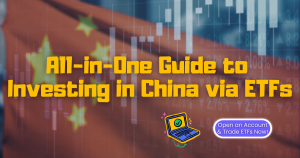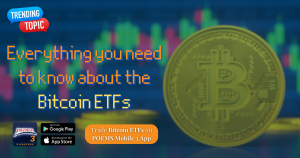Robotics and A.I. ETFs: Which will Win the Battle? July 20, 2018

You’ve probably seen popcorn flicks from the Terminator to Transformers series. It’s usually the same story – the human race gets threatened by robotic superiority, an apocalypse ensues, and so on. It’s a tale that’s been told countless times in modern pop culture. Well, here’s the thing – humanity may not be too far off from counting machines as masters.
Threatened yet? Relax… We’re probably still some ways from that happening. But it’s no stretch of the imagination to say that advancements in technology are changing the way we live, work and play. Companies are employing machines that offer improved software interfaces, dexterity and weight-lifting capabilities to perform repetitive, heavy or dangerous tasks. Advancements in the robotics industry have reduced costs for small and medium-sized companies, not just the big ones. And there’s growing demand for smart machines across various sectors in the global economy.
For sure, Artificial Intelligence (A.I.) as a growth area, is no longer a piece of science fiction. A.I. has a presence in our daily lives, often without us noticing. If you’ve ever clicked on a product recommendation on e-commerce sites like eBay, asked Siri to find the nearest ATM, or tagged your friends in a photo on Facebook – that’s A.I. in action! From language translation to image recognition to machine learning, A.I. is not just transforming our daily lives; it’s reshaping entire industries.
The Global Ageing Population
Ironically, the rise of the machines is partly attributed to the overall advancement in age of humankind. The world’s ageing population will increase by eight percent, from 559 million in 2015 to 604 million in 2020[1]. This trend has implications on costs, taxes, productivity and labour costs.
Since an ever-youthful workforce isn’t a scenario that firms can bank on, companies are looking to robotics and A.I. to increase productivity and pare down labour costs. Robot shipments to North America reached a record high of US$507 million in the first quarter of 2018[2]. According to the Robotic Industries Association (RIA), an estimated 250,000 robots are now in use in the US – the third-highest in the world behind Japan and China[3].
Worldwide spending on robotics and related services is expected to grow from US$91.5 billion in 2016 to US$188 billion by 2020[4]. It’s widely believed that mass adoption of robots, automation and A.I. could represent a fourth Industrial Revolution – after the advent of the steam engine, mass production and electronics. With technology advancing at such a rapid pace, it’s no surprise that some of us are wondering if the plotlines in those movies we’ve watched will transpose into reality.
Five Robotics & A.I. ETFs Competing for a Share of the Technology Pie
Doomsday scenarios aside, investors intending to gain exposure to the robotics and A.I. industry can do so via five thematic Exchange Traded Funds (ETFs) available on the market. With two of the five ETFs newly launched in 2018, issuers are racing to meet growing demand for financial products with exposure to the robotics and A.I. industry.
The two new additions will be competing against three other existing giants for this thematic ETF market share, which is worth a total of more than US$6 billion in Assets under Management (AUM).
The Three Robotics and A.I. ETF Giants
The ROBO Global Robotics and Automation Index ETF (ROBO) was the first thematic ETF in the world that tracks the global robotics, automation and A.I. sectors. It was listed on 21st October 2013 and the robotics and A.I. ETF sector has progressed leaps and bounds since; with another two specialised ETFs joining the pool in 2016.
Fewer than five years since their entries into the market, the three robotics and A.I. ETFs’ combined AUM has already surpassed the US$6 billion mark in the first quarter of 2018.
To illustrate the popularity of the existing robotics and A.I. ETFs, Global X Robotics and A.I. Thematic ETF (BOTZ), attracted US$659 million of fund inflows in January 2018 alone. BOTZ has now grown to over US$2 billion in AUM since its inception one-and-a-half years ago.
Against such established competitors, what can the two new ETFs offer to investors in a saturated market space?
First Trust NASDAQ Robotics and Artificial Intelligence ETF
First Trust Advisors L.P. launched the NASDAQ Robotics and Artificial Intelligence ETF (ROBT) on 21st February 2018. ROBT is a Strategic Beta ETF that adopts alternative index construction rules instead of the traditional indexing strategy based on market capitalisation.
For example, ROBT classifies its holdings into three categories: the enablers, engagers, and enhancers.
Enablers are companies that develop the components of robotics and A.I. technology, such as hardware or equipment. Engagers are firms that design and create the robotics or technology, such as the development of software or systems. Enhancers are companies that provide add-ons or value-added services to existing products within the robotics and A.I sector.
Each category will comprise the top 30 companies in the relevant fields and industries. 25% of portfolio weightage will be assigned to enablers, 60% to engagers and 15% to enhancers.
By adopting a rule-based approach to selecting its constituents, Strategic Beta ETF aims to quantify its index criteria and eliminate any irrational behavioural factors from portfolio management.
iShares Robotics and A.I. ETF
The largest ETF issuer in the world, BlackRock, launched the latest iShares Robotics and A.I. ETF (IRBO) on 28th June 2018.
IRBO is BlackRock’s first robotics and A.I. ETF in the US. This ETF will complement the existing Ireland domiciled iShares Automation and Robotic UCITS ETF (RBOT), which is listed on the London Stock Exchange (LSE).
IRBO has the competitive advantage of having the lowest expense ratio amongst the other three US-listed ETFs. Investors tend to place a higher weightage on expense ratio when choosing ETFs with a similar benchmark index or thematic exposure. Lower expense ratio will lead to higher cost savings over time.
While IRBO enters a US market dominated by several established competitors, the new ETF could make inroads with investors looking for a cost-effective alternative to existing robotics and A.I. ETFs.
Conclusion
The intersection of robotics and A.I. technology will change a multitude of industries and revolutionise ways in which people live their lives.
While we ponder the possibility of machines becoming our masters, why not make some gains as the robots rise? Robotics and A.I. ETFs may be the answer.
That said, will the two new ETFs mentioned above enjoy similar success as the existing thematic ETFs? Or are they too late to join the party for a share of the technology pie? Perhaps you can decide the outcome… and be master over the machines.
| ETF | iShares Robotics and Artificial Intelligence ETF | First Trust NASDAQ Artificial Intelligence and Robotics ETF | ROBO Global Robotics and Automation Index ETF | iShares Automation & Robotics UCITS ETF | Global X Robotics and Artificial Intelligence Thematic ETF |
| Ticker | IRBO | ROBT | ROBO | RBOT | BOTZ |
| Exchange | AMEX | NASDAQ | AMEX | LSE | NASDAQ |
| Inception Date | 28 June 2018 | 21 February 2018 | 21 October 2013 | 8 September 2016 | 12 September 2016 |
| AUM (USD) | 9.50 Million | 17.55 Million | 2.11 Billion | 2.41 Billion | 2.26 Billion |
| Expense ratio | 0.47% | 0.65% | 0.95% | 0.40% | 0.68% |
| Number of Holdings | 92 | 100 | 90 | 105 | 41 |
| Top 3 Holdings | – LINE Corp– 21 Vianet Group Inc– Netflix Inc | – iRobot Corp– Aerovironment Inc– AVEVA Group PLC | – iRobot Corp– Brooks Automation Inc– Aerovironment Inc | – Via Technologies Inc– Line Corp– ASMedia Technology Inc | – Intuitive Surgical Inc– ABB Ltd– Keyence Corp |
| Region Exposure | North America – 56%APAC – 31%Europe – 11%Asia – 1% | North America – 59%Europe – 24%APAC – 13%Asia – 3%Latin America – 2% | North America – 48%APAC – 23%Europe – 21%Asia – 7% | Asia – 45.98%North America – 33.55%Europe – 15.11%Latin America – 1.01%Other – 3.78% | APAC – 44%North America – 35%Europe – 19%Asia – 1% |
| Sector Exposure | Technology – 76.92%Industrials – 14.69%Consumer Discretionary – 6.01%Healthcare – 2.26%Cash/derivatives – 0.12% | Technology – 60%Industrials – 15%Healthcare – 10%Consumer, cyclical – 9%Cash Component – 7% | Technology – 47%Industrial – 37%Healthcare – 8%Consumer, cyclical – 4%Energy – 3%Cash Component – 1% | Technology – 68.30%Industrials – 28.15%Consumer Discretionary – 1.93%Healthcare – 1.06%Cash/derivatives – 0.57% | Industrials – 46%Technology – 32%Healthcare – 15%Other – 3%Consumer, cyclical – 3%Energy – 1% |
Information accurate as of 3 July 2018
Reference:
- [1] https://www2.deloitte.com/content/dam/Deloitte/global/Documents/Life-Sciences-Health-Care/gx-lshc-2017-health-care-outlook-infographic.pdf
- [2] https://www.robotics.org/content-detail.cfm/Industrial-Robotics-News/North-American-Robotics-Market-Sets-New-First-Quarter-Shipments-Record/content_id/7174
- [3] https://www.robotics.org/content-detail.cfm/Industrial-Robotics-News/North-American-Robotics-Market-Sets-New-First-Quarter-Shipments-Record/content_id/7174
- [4] https://www.investopedia.com/news/another-robotics-etf-here/
Disclaimer
These commentaries are intended for general circulation. It does not have regard to the specific investment objectives, financial situation and particular needs of any person who may receive this document. Accordingly, no warranty whatsoever is given and no liability whatsoever is accepted for any loss arising whether directly or indirectly as a result of any person acting based on this information. Opinions expressed in these commentaries are subject to change without notice. Investments are subject to investment risks including the possible loss of the principal amount invested. The value of the units and the income from them may fall as well as rise. Past performance figures as well as any projection or forecast used in these commentaries are not necessarily indicative of future or likely performance. Phillip Securities Pte Ltd (PSPL), its directors, connected persons or employees may from time to time have an interest in the financial instruments mentioned in these commentaries. Investors may wish to seek advice from a financial adviser before investing. In the event that investors choose not to seek advice from a financial adviser, they should consider whether the investment is suitable for them.
The information contained in these commentaries has been obtained from public sources which PSPL has no reason to believe are unreliable and any analysis, forecasts, projections, expectations and opinions (collectively the “Research”) contained in these commentaries are based on such information and are expressions of belief only. PSPL has not verified this information and no representation or warranty, express or implied, is made that such information or Research is accurate, complete or verified or should be relied upon as such. Any such information or Research contained in these commentaries are subject to change, and PSPL shall not have any responsibility to maintain the information or Research made available or to supply any corrections, updates or releases in connection therewith. In no event will PSPL be liable for any special, indirect, incidental or consequential damages which may be incurred from the use of the information or Research made available, even if it has been advised of the possibility of such damages. The companies and their employees mentioned in these commentaries cannot be held liable for any errors, inaccuracies and/or omissions howsoever caused. Any opinion or advice herein is made on a general basis and is subject to change without notice. The information provided in these commentaries may contain optimistic statements regarding future events or future financial performance of countries, markets or companies. You must make your own financial assessment of the relevance, accuracy and adequacy of the information provided in these commentaries.
Views and any strategies described in these commentaries may not be suitable for all investors. Opinions expressed herein may differ from the opinions expressed by other units of PSPL or its connected persons and associates. Any reference to or discussion of investment products or commodities in these commentaries is purely for illustrative purposes only and must not be construed as a recommendation, an offer or solicitation for the subscription, purchase or sale of the investment products or commodities mentioned.
About the author
Mr. Joel Lim
ETF Specialist
Joel graduated from Singapore Institute of Management, University of London with a First Class Honours in Business. He was the recipient of SIM University of London’s Top Student Bronze Award in 2017 and was the worldwide examination topper for the “Financial Management” module in 2016. Joel was also commended by University of London for his excellent performance in the 2014 Examinations.
Joel is involved in ETF education, providing trading ideas and support to traders, dealers and fund managers. Joel also works closely with ETF issuers to educate retail investors about new ETFs during the Initial Offering Period.

 All-in-One Guide to Investing in China via ETFs
All-in-One Guide to Investing in China via ETFs  Everything you need to know on Bitcoin ETFs
Everything you need to know on Bitcoin ETFs  Maximising your Tax Savings & Retirement Funds with SRS in Singapore
Maximising your Tax Savings & Retirement Funds with SRS in Singapore  Is There a “Fairest of Them All”?
Is There a “Fairest of Them All”? 









